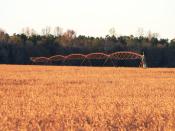THREE NEW HESPERIOIDAE (HESPERIINAE) FROM SOUTH CAROLINA: Euphyes bimacula arbogasti is described as a new subspecies from Berkeley County, South Carolina. It is known from only a few widely scattered colonies in the coastal swamp forests of the southeastern United States from Georgia to southeastern North Carolina. It is darker then E. b. bimacula and E. b. illinois. Poanes aaroni minimus is described as a new subspecies from Bull Swamp, Orangeburg County, South Carolina. This unique inland subspecies is presently known only from the type locality. It is darker then P. a. aaroni and P. a. howardi. Hesperia attalus nigrescens is described as a new subspecies from the relict dunes of Sandy Island National Wildlife Sanctuary, Horry County, South Carolina. This isolated subspecies is much darker than H. a. attalus and H. a. slossonae. The Sandy Island colony of H. a. nigrescens is believed to be the only remaining colony of this subspecies.
All three subspecies are similarly melanic.
Additional key words: Threatened species, original descriptions.
INTRODUCTION At least 33 species/subspecies of butterflies were originally described from populations inhabiting east coastal Georgia or south coastal South Carolina by the earliest workers on American Lepidoptera in the 1700's and early 1800's. Since then however, very little taxonomic attention has been given to the Lepidopterian fauna of the mid-Atlantic area of the United States between Florida and New Jersey. This has been especially true for the last half of the 1900's when very few lepidopterists, and even fewer butterfly taxonomists, have been residents of the mid-Atlantic area.
A result of this long term scarcity of collectors is that few specimens from this region are available for study. This informational void has given rise to taxonomic oversimplification and misrepresentation in the popular literature of the taxa occupying the area between Florida and New York and from the Atlantic coast to the Mississippi River. Most modern butterfly books recognize few species as occurring in more than one subspecies throughout this vast area of the United States.
This is in stark contrast with the west coastal region of the United States with its abundance of lepidopterists and subspecies. In this western area it is generally expected that each mountain range and valley system will harbor different subspecies - and indeed they often do. In California, for example, some (supposed) subspecies are separated by only a few hundred yards. Yet, the consistent impression given in the popular literature is that the species of South Carolina (from its coast to its mountains) are not expected to differ subspecifically from those of New Jersey, Missouri, or Louisiana.





